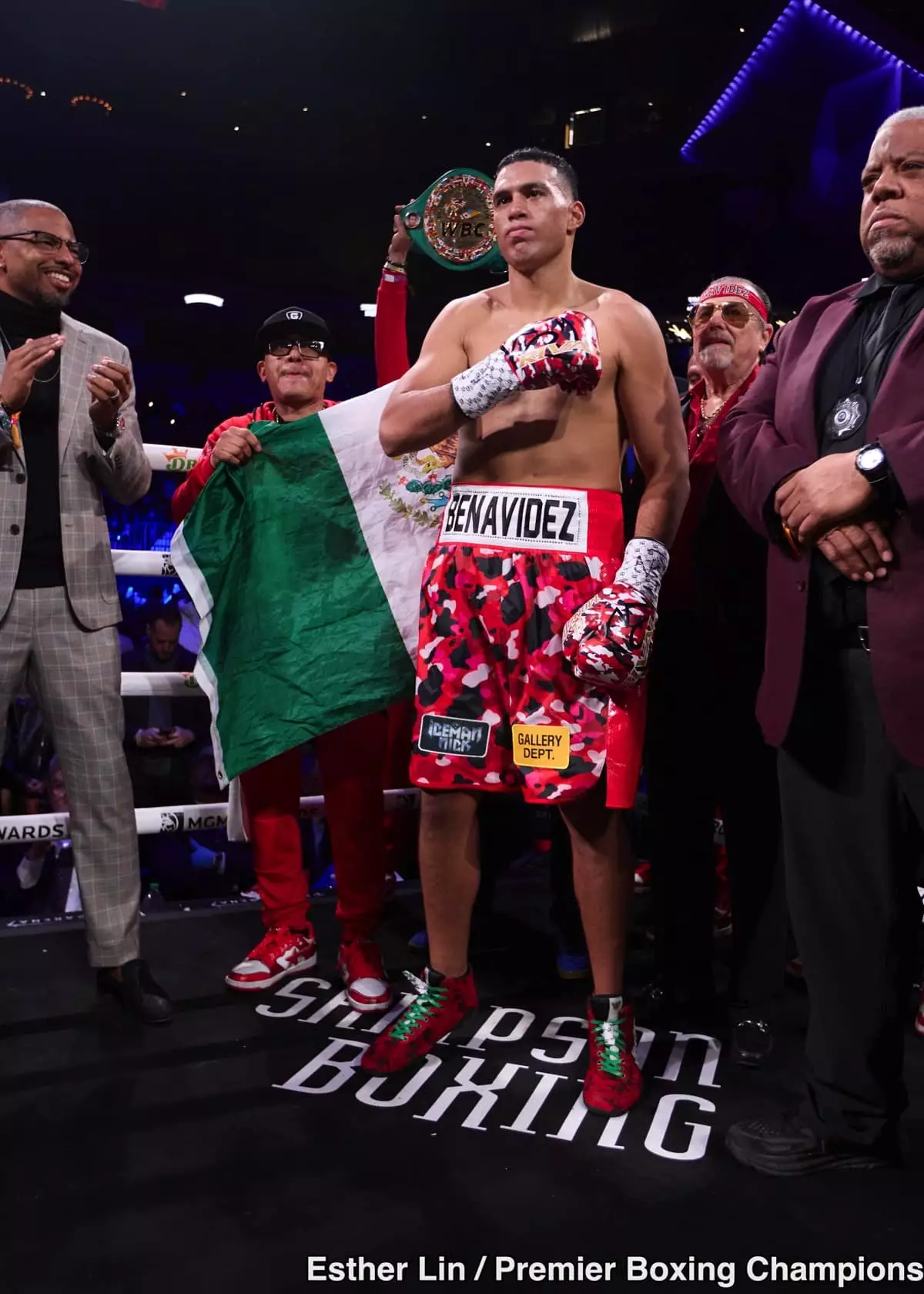When discussing the landscape of the light heavyweight division, few names resonate as strongly as David Benavidez, Artur Beterbiev, and Dmitry Bivol. As the boxing world anticipates potential face-offs between these formidable athletes, the insights from trainer Stephen Edwards shed light on the dynamics of these matchups, specifically focusing on Benavidez’s unique skill set and his chances against a seasoned champion like Beterbiev.
At just 26 years old, David Benavidez has established an impressive record of 30 wins and 0 losses, with 24 of those victories coming by way of knockout. His recent unanimous decision victory over David Morrell highlighted Benavidez’s ability to execute high-output strategies, particularly effective when fighting on the inside. This performance not only solidified his position as the WBC mandatory challenger for Beterbiev’s title but also set the stage for an enticing matchup in the near future.
Benavidez’s gaudy punch numbers demonstrate his tireless work ethic, something that trainer Edwards insists will be key in a potential bout against Beterbiev. However, while volume-punching can be an effective strategy, it also comes with risks, particularly against a power hitter like Beterbiev, who thrives in short, close-range exchanges.
Beterbiev, the undisputed light heavyweight champion, is notorious for his raw power and clinical efficiency. With a professional record boasting 20 knockouts from 21 fights, his ability to dismantle opponents has left fans and critics in awe. Edwards acknowledges this strength, pointing out that while Beterbiev is methodical in his approach and can absorb punches, his power is instantly threatening. The trainer notes that Benavidez will face an uphill battle if he hopes to outwork Beterbiev while taking the risk of getting caught in the crossfire.
The matchup becomes particularly intriguing because Beterbiev’s style of fighting pairs well with Benavidez’s aggressive tendencies. Beterbiev’s ability to reset himself during exchanges and land heavy punches frequently presents a dilemma for Benavidez, who must adapt his game plan significantly to avoid being overwhelmed. As Edwards points out, for every advantage Benavidez brings, Beterbiev poses an equal threat that could shift the fight’s momentum in an instant.
While skills and styles play a significant role in boxing, statistics often define the narrative. Edwards highlights the possibility of an engaging contest filled with explosive exchanges. Beterbiev’s conditioning and punch resistance have historically kept him at the top, while Benavidez’s volume approach could chance throwing Beterbiev off balance. Yet, there remains a vulnerability in Benavidez’s previous match against Morrell, where he suffered damage that might prove pivotal in a fight against a power puncher.
The physical toll taken during fights can have lasting effects. It leads to the pressing question: can Benavidez effectively implement his inside-fighting strategy against Beterbiev without exposing himself to the type of punishment he received against Morrell? Edwards remains skeptical, understanding that if Benavidez returns to the same tactics without refinement, he risks falling victim to Beterbiev’s game and could face defeat in a similar manner to Bivol.
To stand a chance against Beterbiev, it’s essential for Benavidez to evolve as a fighter. Edwards suggests that minor adjustments in approach could enable Benavidez to effectively mitigate the risks posed by Beterbiev’s power. He could leverage his speed and technique to maintain distance while picking his moments to strike. Essentially, Benavidez’s chance of victory may be hinged on his ability to outmaneuver Beterbiev rather than outmuscle him, a tactical pivot that would necessitate stringent focus and precision.
Furthermore, the impending Beterbiev-Bivol rematch could play a crucial role in the dynamics moving forward. The outcome of this encounter might influence Benavidez’s next steps. If both fighters exhaust each other, it could create an opening for Benavidez, but he must be ready to capitalize on that opportunity.
The potential matchups involving David Benavidez, Artur Beterbiev, and Dmitry Bivol symbolize the heart of competitive boxing, where skill, power, and strategy collide. As each fighter prepares for what could be groundbreaking bouts, Benavidez finds himself at a crossroads where adaptability is crucial. The anticipation is palpable, and as the boxing community holds its breath, fans can only hope to witness a clash that encapsulates the best of what the sport has to offer. The conversations between trainers like Edwards serve to remind us of the intricacies of fight strategy, revealing the nuanced dance that unfolds inside the ring. In a sport defined by uncertainty, the competition promises to deliver an extraordinary spectacle.

